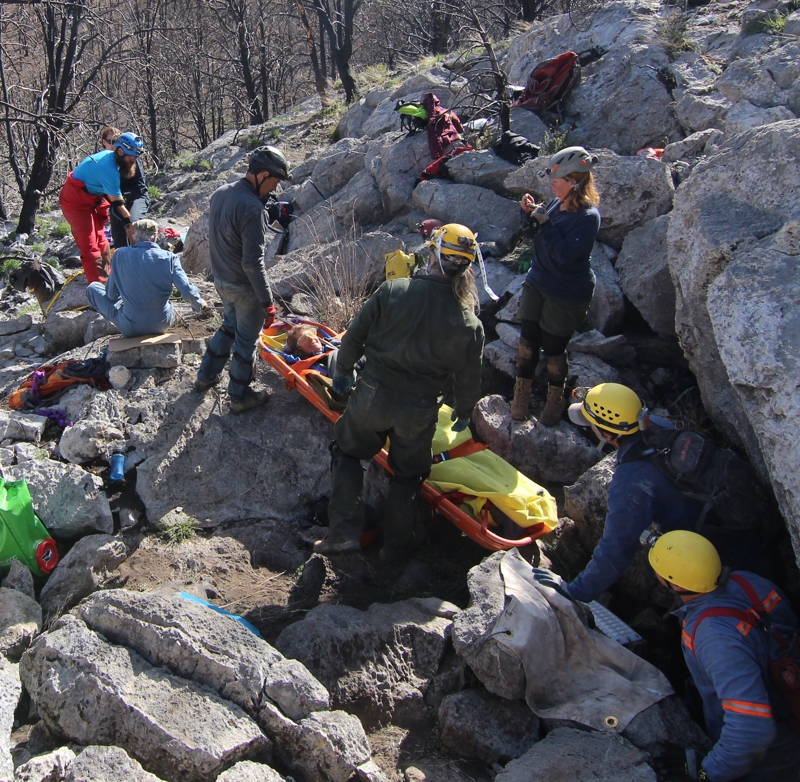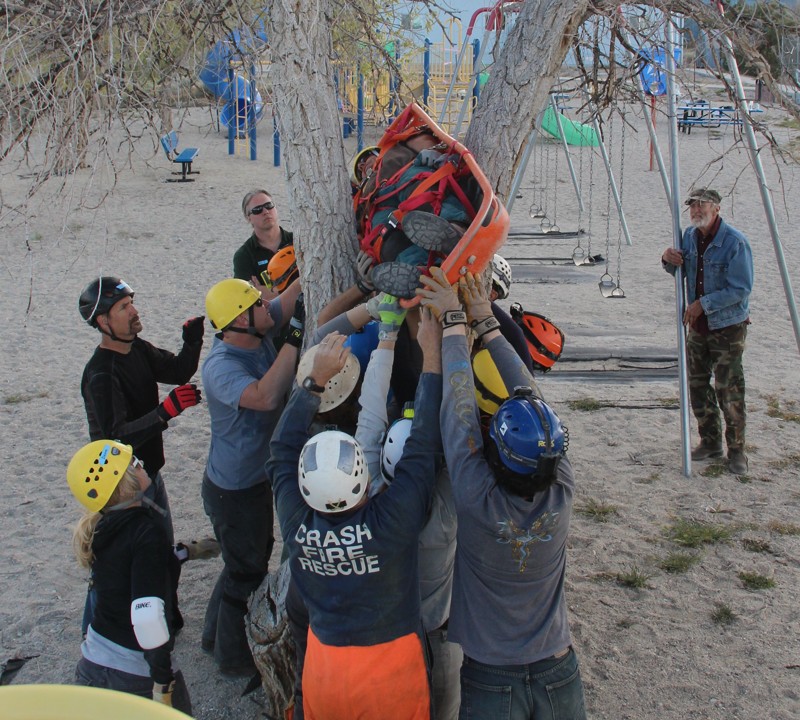Safety
Tips to keep you safe!
Let Someone Know Before You Cave
When caving, let someone know when and where you are going. This person is called the surface contact or surface watch, and they need to know to call 911 if you don't return. Give your surface contact this information ahead of time:
- What cave(s) you are planning to visit
- Location of these cave(s)
- How long you expect to be in the cave(s)
- What vehicle(s) you are driving and where you will park
- Who else is going with you
- What kind of gear you will have with you (for a recreational trip, exploration, survey, other)
- Any vertical section in these cave(s)
- Does anyone in the group have any medical issues
- What kind of clothing you will be wearing
- Number of years you have been caving and if you have any cave rescue training
- What time you expect to leave the cave and get back to your vehicle and cell service
Download this Caver Alert Information Sheet for a handy template to record this information and instructions for your surface contact.
When Underground: What To Do In An Emergency
- So you're on a caving trip and you or a member of your team becomes injured. What do you do next?
- Protect yourself first and then your teammate. Don't become another patient.
- Ensure that you can obtain access to the injured person safely. Check for unsafe conditions before entering an accident site and correct all dangerous conditions.
- Determine the extent of injuries and stabilize the patient if you have the skill. Treat for hypothermia prevention. (It's highly recommended to carry a hypothermia kit: extra large garbage bag, candle, and lighter.)
- Determine if the person can walk/crawl out, can be assisted to walk/crawl out, or if you will need assistance to get the person out. If there is any chance of spinal injury do not move the patient except to prevent further injury.
- If the injury is serious, use your own judgment. Begin to take notes about your patient, including date and time for all information. Pulse, respiration, and skin temperature are minimum.
- If you need outside help, send for it or wait for your surface contact to notify authorities. Remember that your surface contact can only call for backup if they know exactly which cave you are in and when to expect your return from that cave.
- Inventory all equipment in your group to determine what is available. Consider what you have to help your patient survive, to aid your survival, and determine what may be needed from the outside. Get the information to the surface.
- When possible and if needed, two people should be sent out for help. They should leave as much food and waterand dry clothing as possible for the people that remain with the patient. They should carry a copy of all notes concerning patient condition and location. Include information about your needs as well as what you have on site to treat the patient with. Your messengers need to know emergency telephone numbers, have keys to vehicles, and have knowledge and experience to get out safely.
- Keep as calm as possible. Reassure your patient. Cave rescues can take a lot of time, so be prepared mentally.
Emergency Contact Information
If you have an emergency situation, first contact your local emergency services by dialing 911 on a phone. Then you may want to contact your regional coordinator.
Accident Reports
American Caving Accidents (ACA) is the journal of record for accident and safety incident reports from the North American caving community and is published by the National Speleological Society. It is a great resource for cavers and rescuers.
Each issue of the ACA includes incident summaries based on collected information, with comments, analyses, editorials and articles on caving safety and accident prevention. Readers of the ACA learn from shared experiences of others and can become safer cavers.
Guide to Responsible Caving
The NSS Guide to Responsible Caving discuses the many aspects in the sport of caving. Exploring caves is becoming increasingly popular in all areas of the world, and caving responsibly is more important now than ever. Learn about safety, training, reduce your footprint in caves, and cave owner relations.

